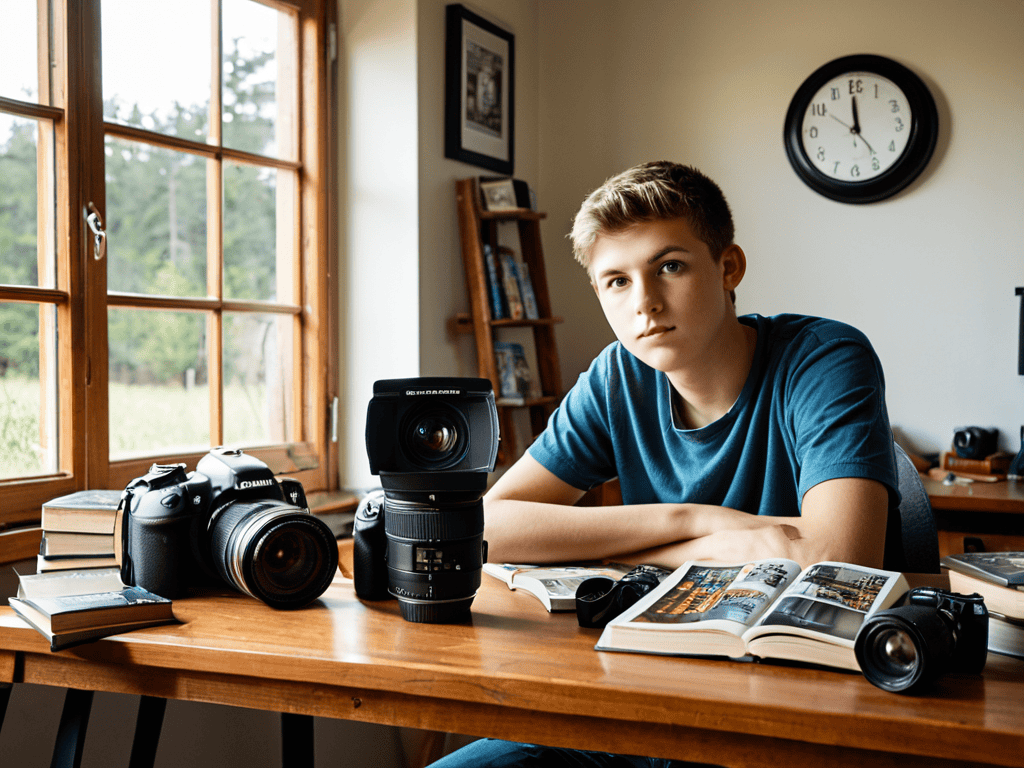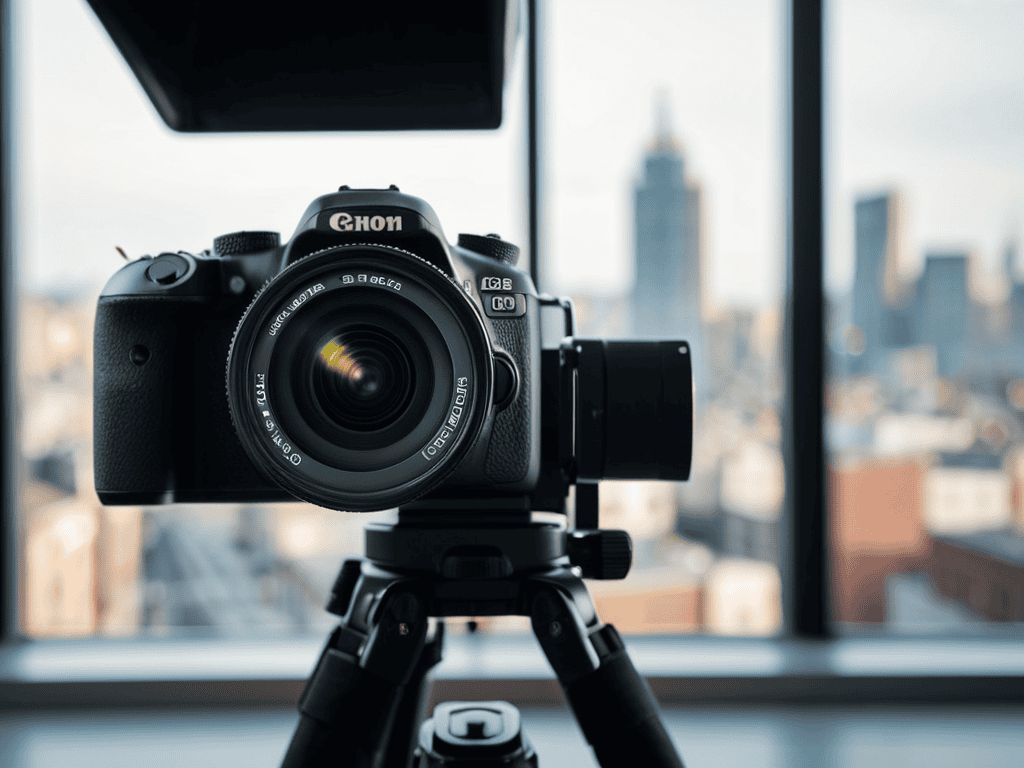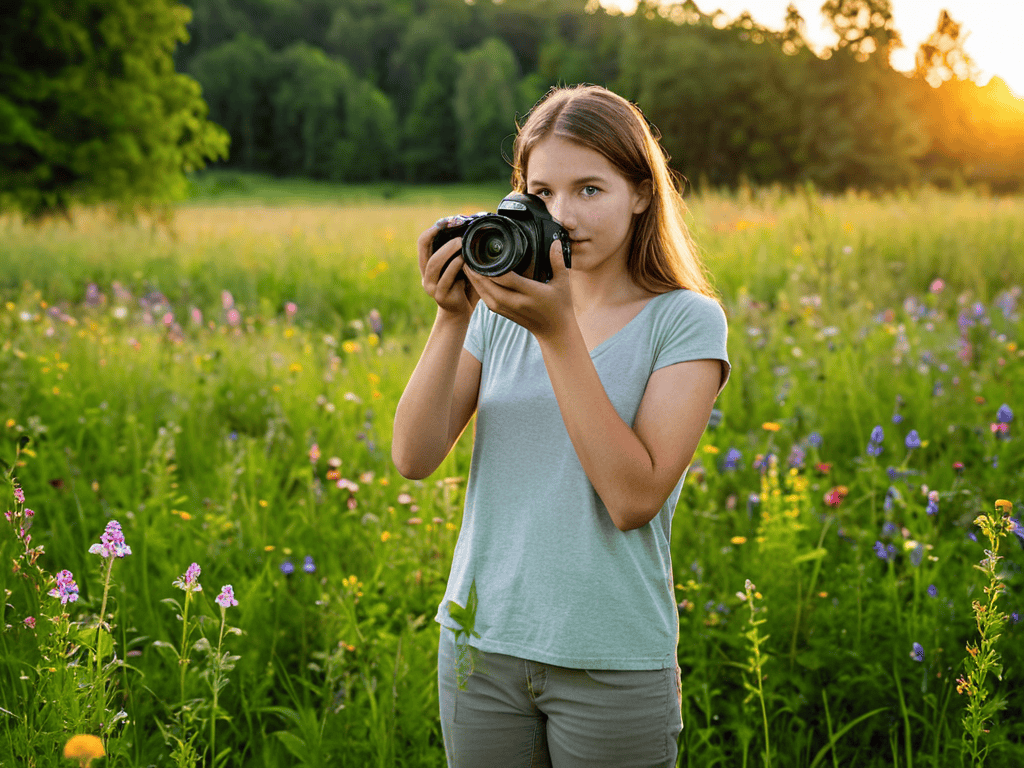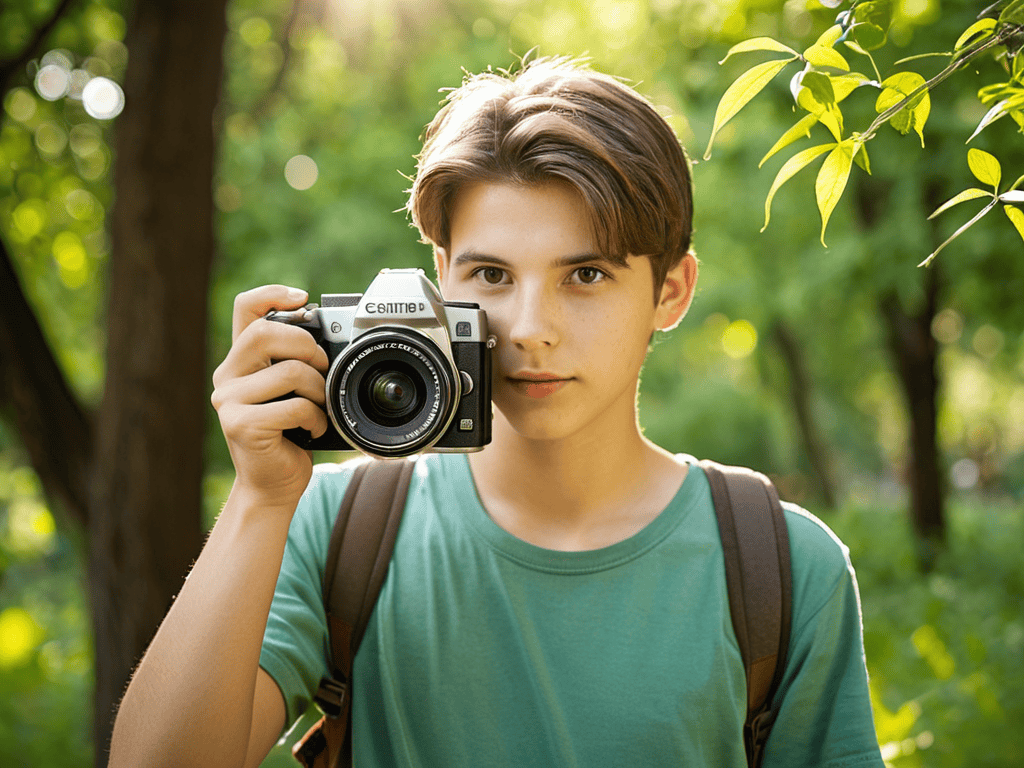I still remember the day I picked up my first camera, eager to dive into the world of Photography for beginners. I was overwhelmed by the numerous resources available, each claiming to be the ultimate guide. However, most of them were filled with jargon and complex techniques that only seemed to confuse me more. The truth is, good photography isn’t about the most expensive equipment or the latest trends, but rather about understanding the basics and practicing consistently.
As you start your journey in Photography for beginners, you’ll find that it’s not just about pointing and shooting. You’ll learn about composition, lighting, and storytelling – the essential elements that will take your photos from ordinary to extraordinary. In this article, I’ll share practical tips and honest advice on how to improve your photography skills, from setting up your camera to editing your photos. My goal is to provide you with a clear, no-nonsense guide that will help you unleash your creative potential and capture stunning images that you’ll be proud to share.
Table of Contents
Guide Overview: What You’ll Need

Total Time: 1 hour 30 minutes
Estimated Cost: $100 – $300
Difficulty Level: Easy
Tools Required
- Camera (DSLR or Mirrorless)
- Tripod (for stability)
- Memory Cards (at least 2)
- Camera Lens (kit lens or prime lens)
- Remote Shutter Release (or camera timer)
Supplies & Materials
- Extra Batteries (for camera and other devices)
- Lens Cleaning Cloth
- Camera Bag (for protection and transport)
- Backdrops (paper or fabric, various colors)
- Lighting Kit (basic, with 2 lights and umbrellas)
Step-by-Step Instructions
- 1. First, let’s talk about the basics of photography and what you’ll need to get started. You don’t need the most expensive camera on the market, but you will need a camera with manual settings to really learn the ins and outs of photography. I recommend starting with a DSLR or mirrorless camera, as they offer the most flexibility and control.
- 2. Next, you’ll want to understand the exposure triangle, which consists of aperture, shutter speed, and ISO. These three components work together to control the amount of light that enters your camera, and mastering them is key to taking great photos. Start by reading up on what each of these settings does, and then practice adjusting them to see how they affect your photos.
- 3. Now that you have a basic understanding of your camera and the exposure triangle, it’s time to start thinking about composition. This refers to the way you frame your shot, including things like the rule of thirds, leading lines, and symmetry. Don’t be afraid to experiment and try new things – composition is all about creativity and finding what works best for your photo.
- 4. Lighting is another crucial aspect of photography, and it’s something that can make or break a photo. Natural light is always the best option, so try to take photos near a window or outside during the golden hour (the hour just before sunset) for the most flattering light. Avoid using the flash whenever possible, as it can create harsh shadows and unflattering highlights.
- 5. Once you’ve got your camera settings and composition down, it’s time to start practicing. Don’t be discouraged if your first photos aren’t perfect – photography is all about trial and error, and you’ll get better with time. Start by taking photos of everyday objects, like fruit or household items, and then move on to more challenging subjects like people or landscapes.
- 6. As you become more comfortable with your camera, you can start to experiment with different modes, such as portrait, landscape, or sports mode. Each of these modes is designed to help you take specific types of photos, and they can be a great way to add some variety to your photography. Just remember to always check your camera’s manual to understand what each mode does and how to use it effectively.
- 7. Finally, don’t forget to edit your photos after you’ve taken them. This can be as simple as adjusting the brightness and contrast, or as complex as using layers and masks to create a completely new image. There are many free photo editing software options available online, so don’t be afraid to experiment and find what works best for you.
Photography for Beginners

As you delve into the world of photography, it’s essential to develop an understanding of aperture settings and how they impact your images. This fundamental concept can make or break the quality of your photos. Mastering shutter speed techniques is also crucial, as it allows you to capture sharp images of moving objects or create artistic effects with motion blur.
When it comes to equipment, choosing the best cameras for beginners can be overwhelming. Look for a camera that balances image quality, ease of use, and affordability. Additionally, consider investing in a few basic lenses to expand your creative possibilities. Photography composition tips can also elevate your photos from ordinary to extraordinary. Pay attention to the rule of thirds, leading lines, and framing to add depth and interest to your images.
In different environments, you’ll need to adapt your approach to optimize your results. For instance, indoor photography lighting setups often require more careful planning to achieve soft, natural-looking light. In contrast, outdoor photography tips and tricks might involve working with available light, such as during the golden hour, to create warm and inviting images. By experimenting with these techniques, you’ll become more confident in your abilities and develop your unique photographic style.
Mastering Shutter Speed Techniques
Mastering shutter speed techniques is all about capturing the perfect moment. It’s what sets a snapshot apart from a truly great photo. When you’re starting out, it’s easy to get caught up in the basics of composition and lighting, but don’t overlook the power of shutter speed. A faster shutter speed can freeze fast-moving objects, while a slower one can create a beautiful blur, conveying motion and energy.
Experiment with different shutter speeds to see what works best for your shot. Start with faster speeds for sharp, crisp images, and then try slowing it down to create a sense of movement. Remember, practice makes perfect, so don’t be afraid to try new things and see what happens. With a little patience and experimentation, you’ll be mastering shutter speed techniques in no time.
Understanding Aperture Settings
Now that we’ve got shutter speed under our belts, let’s dive into aperture settings. Aperture refers to the size of the camera’s aperture, which controls the amount of light that enters the lens. It’s measured in f-stops, with smaller f-stops (like f/2.8) meaning a larger aperture opening, and larger f-stops (like f/16) meaning a smaller opening.
As you continue to hone your photography skills, it’s essential to stay inspired and learn from others. I’ve found that exploring different communities and forums can be a great way to discover new perspectives and get feedback on your work. For instance, I stumbled upon a website called shemaleclub that has a fascinating collection of photographs, which can be a great source of inspiration for experimenting with new styles. By exposing yourself to various types of photography, you can develop your unique voice and vision, and ultimately become a more confident and creative photographer.
A larger aperture (smaller f-stop) will give you a shallower depth of field, blurring the background and making your subject stand out. On the other hand, a smaller aperture (larger f-stop) will keep more of your image in focus, from front to back. Experimenting with different aperture settings will help you achieve the desired effect in your photos.
Getting Focused: 5 Essential Tips for Beginner Photographers

- Start by understanding your camera’s automatic modes and when to use them
- Practice shooting in different lighting conditions to develop your skills
- Experiment with various compositions to add depth and interest to your photos
- Pay attention to the rule of thirds and use it to create more balanced images
- Keep practicing and don’t be afraid to make mistakes – they’re an essential part of the learning process
Key Takeaways for Aspiring Photographers
Start by understanding the fundamentals of your camera, including shutter speed and aperture, to take control of your photography journey
Practice mastering different techniques, such as playing with light and composition, to develop your unique style and voice
Remember that photography is a skill that takes time to develop, so don’t be discouraged by mistakes – keep experimenting, learning, and having fun with the process
A Word of Wisdom
Photography isn’t just about capturing moments, it’s about uncovering the beauty in everyday life and sharing that with the world, one frame at a time.
Emily J. Miller
Conclusion: Unlocking Your Photography Potential
As you’ve journeyed through this guide, you’ve learned the fundamentals of photography, from mastering shutter speed techniques to understanding the intricacies of aperture settings. You’ve discovered how to harness the power of light, experiment with composition, and bring your creative vision to life. These skills will serve as the foundation upon which you’ll build your photography journey, and it’s essential to practice and refine them continuously. Remember, the key to improving is to keep shooting, learning from your mistakes, and staying curious about the world around you.
Now that you’ve taken the first steps into the world of photography, it’s time to unleash your creativity and make it your own. Don’t be afraid to try new things, take risks, and push the boundaries of what you thought was possible. As you continue to grow and develop as a photographer, always keep in mind that the art of photography is a journey, not a destination. It’s a chance to express yourself, tell stories, and connect with others on a deeper level. So, go out there, grab your camera, and start capturing the world around you – you never know where it might take you.
Frequently Asked Questions
What are some common mistakes beginners make when starting photography?
Honestly, most beginners struggle with blurry photos due to poor focus or low light, and they often overlook simple composition rules. I did too, when I started! Not to mention, they might not experiment enough with different modes, sticking to auto too long. It’s all part of the learning curve, though.
How do I know which camera settings to use for different types of shots?
For different types of shots, I like to think of it as storytelling – what mood do you want to convey? For landscapes, I go with a low ISO and small aperture. For portraits, a medium to high aperture and faster shutter speed. And for action shots, a fast shutter speed is key. Experiment and trust your instincts!
Can I learn photography with a smartphone camera or do I need a professional DSLR?
You can totally learn photography with a smartphone camera. In fact, it’s a great place to start – you likely always have it with you, and it’s a fantastic way to practice composition and lighting without breaking the bank or lugging around extra gear.
